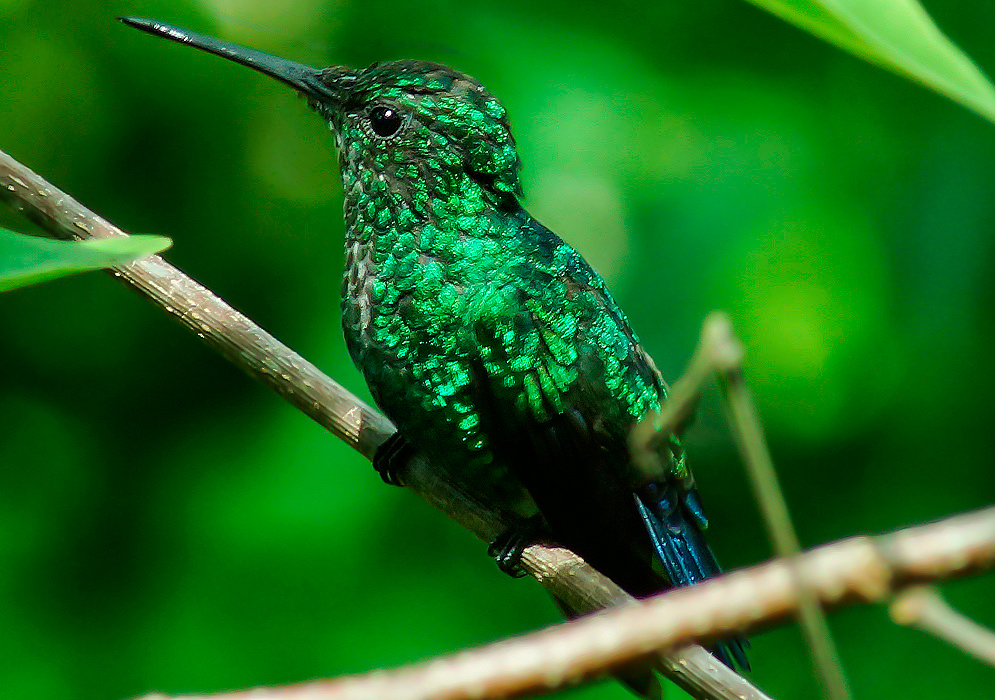This post has 11 Simple Fields-fields attached. Show fields.

The Blue-tailed Emerald is a species of hummingbird belonging to the "emeralds" tribe Trochilini within the subfamily Trochilinae. This species exhibits a wide distribution across tropical and subtropical regions of South America, notably east of the Andes. Its range extends from Colombia east to the Guianas and Trinidad, and further south to northern Bolivia and central Brazil. The Blue-tailed Emerald's extensive habitat encompasses diverse ecological regions, showcasing the bird's adaptability to various environmental conditions. There are seven recognized subspecies of the Blue-tailed Emerald: C. m. caribaeus, C. m. duidae, C. m. subfurcatus, C. m. mellisugus, C. m. phoeopygus, C. m. napensis, and C. m. peruanus. The classification of these subspecies, however, is subject to varying interpretations between different taxonomic authorities. The Clements taxonomy and Handbook of the Birds of the World (HBW) include napensis within phoeopygus, considering them indistinguishable from each other. Additionally, the HBW's subspecies list includes C. m. pumilis and C. m. melanorhynchus, which Clements assigns to the Western Emerald (C. melanorhynchus), a species the International Ornithological Congress (IOC) also recognizes but treats as monotypic.
The Blue-tailed Emerald is classified as Least Concern by the International Union for Conservation of Nature (IUCN).
The Blue-tailed Emerald's habitat preferences are diverse, ranging from subtropical and tropical moist lowland and montane forests to dry savannas. It also thrives in various artificial or terrestrial habitats, including arable land, plantations, rural gardens, urban areas, and even in heavily degraded former forests. This flexibility in habitat choice indicates the species' adaptability to a range of environmental conditions, including those altered by human activities. Its presence in urban areas suggests a certain level of comfort in proximity to human activity, which is not uncommon among various hummingbird species that often visit gardens and feeders in populated areas. Photographed in Minca, Colombia.

